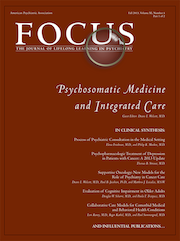Subsyndromal Delirium in Older People: A Systematic Review of Frequency, Risk Factors, Course and Outcomes
Abstract
Objective
To determine the frequency, risk factors, course and outcomes of subsyndromal delirium (SSD) in older people by systematically reviewing evidence on these topics.
Methods
Subsyndromal delirium was defined as the presence of one or more symptoms of delirium, not meeting criteria for delirium and not progressing to delirium. MEDLINE, EMBASE, PsycINFO and the Web of Science were searched for potentially relevant articles published from 1996 to June 2011. The bibliographies of relevant articles were searched for additional references. Twelve studies met the inclusion criteria. The validity of included studies was assessed according to Evidence-Based Medicine criteria. Information about the study population and methods, age, gender, proportion with dementia, diagnostic criteria, period and frequency of observation, and the topics above was systematically abstracted, tabulated and synthesized using standard meta-analysis techniques.
Results
The combined prevalence of SSD was 23% (95% CI, 9–42%); the combined incidence was 13% (95% CI, 6–23%). Risk factors were similar to those for delirium. Episodes lasted up to 133 days and were often recurrent. Outcomes were poor and often intermediate between those of older people with or without delirium. Of note, there was significant unexplained heterogeneity in the results of studies of prevalence, incidence and some risk factors.
Conclusions
SSD in older people may be a frequent and clinically important condition that falls on a continuum between no symptoms and full delirium. Because of significant unexplained heterogeneity in the results of studies of SSD, however, the results of this review must be interpreted cautiously. Further research is necessary. Copyright © 2012 John Wiley & Sons, Ltd.
(Reprinted with permission from International Journal of Geriatric Psychiatry 2013; 28:771–780)



